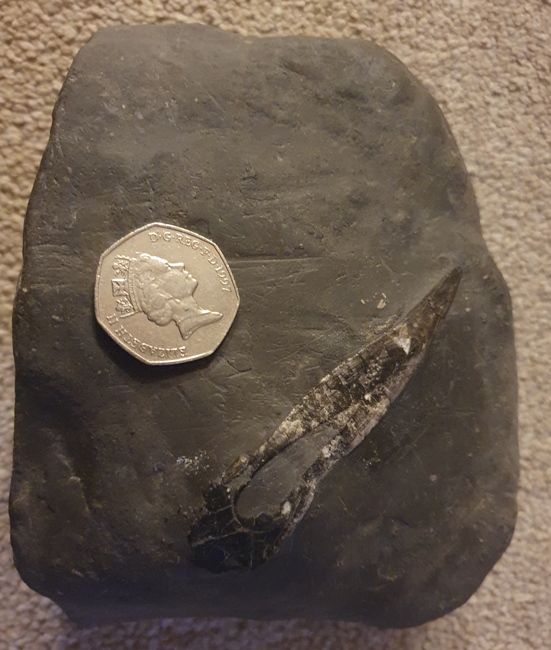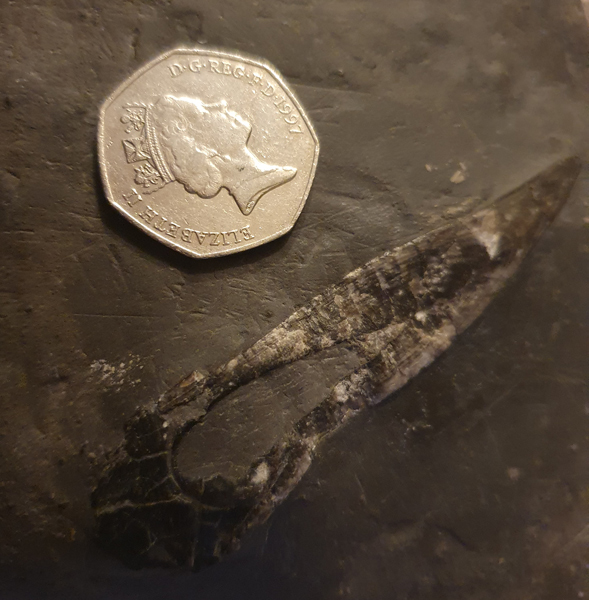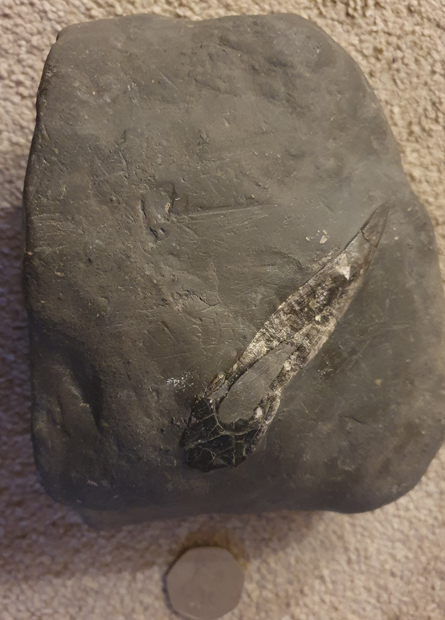Recently, Everything Dinosaur was contacted by Lee who had collected a strange rock whilst visiting Yorkshire. Lee asked what the rock could be and sent in some photos. We contacted Lee and asked him to send in some more pictures, but this time including an object such as a coin that could provide a scale. In our email, we asked where this rock was found.
Robin Hood’s Bay Fossil
Lee commented that this rock was found at Robin Hood’s Bay on the north Yorkshire coast. This is a part of the world we know quite well and it is famous for its fossils. The Redcar Mudstone Formation dominates the geology of this part of the English coast and we suspect that the rock is mudstone and the unusual object is the remnants of a Jurassic shelly invertebrate.

Lower Jurassic
The shales, mudstones and sandstones that outcrop at Robin Hood’s Bay date from the Lower Jurassic (Sinemurian to Pliensbachian fauna stages) and we suspect that this fossil is around 195 – 185 million years old.
The specimen is heavily eroded, and we think it is being viewed as a cross-section. Ammonites are relatively common on this stretch of coastline as are Gryphaea fossils (Devils toenails) and crinoids. It is very difficult to identify this item, just from the photographs, however, we think that as there seem to be striations (lines) visible in the fossil that this is a highly eroded bivalve.

Any Suggestions
We know that many of our blog readers are enthusiastic fossil collectors. We would welcome any suggestions and help with the identification of this specimen.
For replicas of ammonites and belemnites take a look at this section of the Everything Dinosaur website: CollectA Prehistoric Life Models.







Leave A Comment